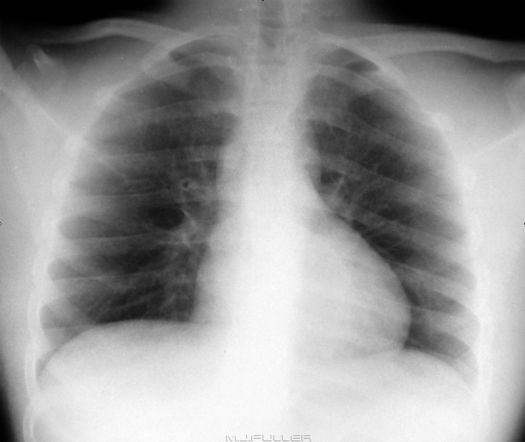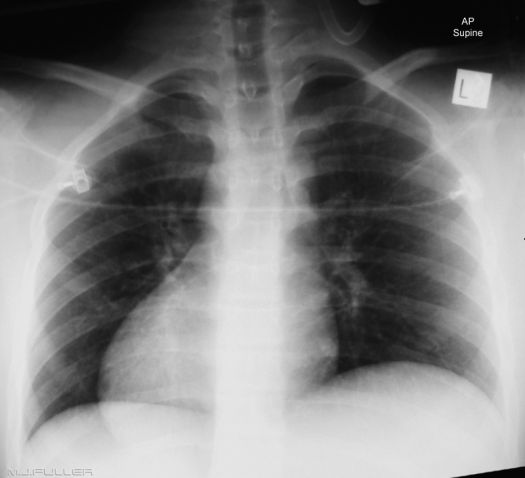Dextracardia in the Resus Room
Jump to navigation
Jump to search
Introduction
The resuscitation room in the Emergency Department is the room where unstable patients or those with life/limb threatening injuries are first assessed. This is a room where there can be frenetic activity and high stress - the radiographer's skills can be tested in this environment. The Radiographer must show he/she can produce radiographic images quickly and efficiently of an appropriate quality. The resus room doctors often act very quickly on the findings from X-ray images. Mistakes by radiographers in this environment can result in inappropriate patient treatment.
Patient History
Image EvaluationA patient has arrived at a major trauma hospital after transfer from a rural hospital. This patient has sustained unknown injuries from a motor vehicle accident (MVA). The patient has arrived with radiographs taken at the previous hospital. These radiographs include the chest image shown below. There is life-threatening danger associated with this image- what is missing?
Image 2
FindingsThe heart shows left to right inversion. The left ventricle of the heart is seen in the right hemithorax. The patient has dextracardia. This raises the question of whether the patient has situs Inversus in which all of the torso viscus are reversed left to right.
DiscussionIf this patient had a pneumothorax, there was a distinct possibility that a trochar would have been introduced into the wrong side of the chest. This can be a life-threatening mistake given that the patient will then have bilateral pneumothoracies- one traumatic and the other iatrogenic.
It is somewhat ironic that the resuscitation room can be a room in which radiographers are least likely to use side markers despite the increased associated risks to the patient. The time taken to place a side marker correctly in the resuscitation room is time clearly well spent.
....back to the Applied Radiography home page

